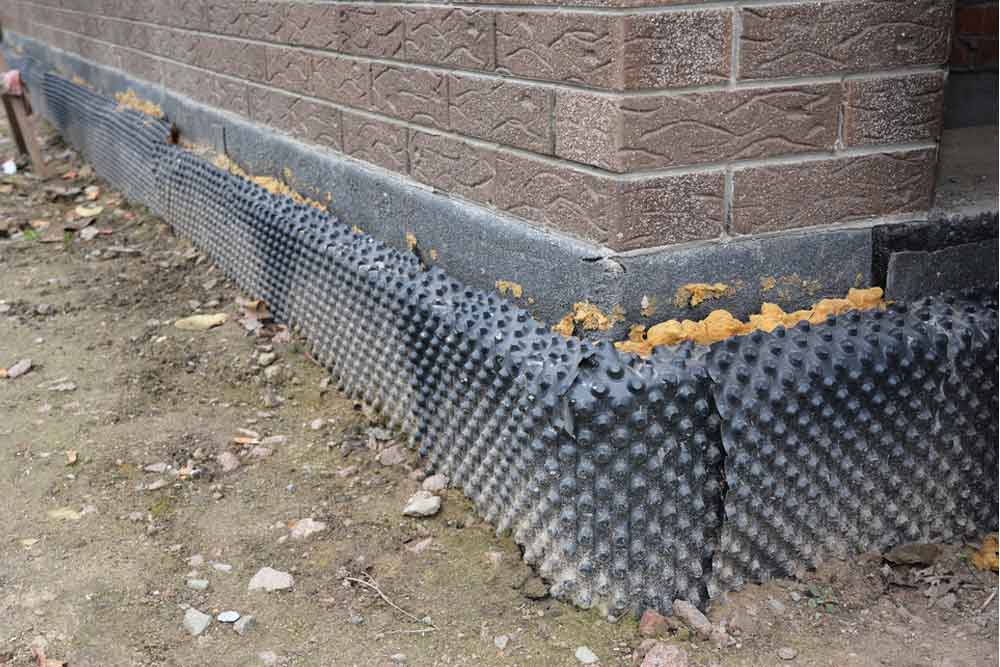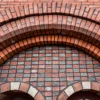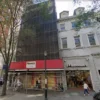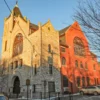When safeguarding buildings against the elements, understanding waterproofing becomes pivotal. So, what is waterproofing? Water proofing plays a key role in building preservation in a city like Philadelphia where architecture ranges from historic landmarks to modern skyscrapers. It involves applying specialized treatments to structures to prevent water damage. Waterproofing is more than just a preventative measure; it’s a vital process that protects buildings from the detrimental effects of moisture, such as mold, decay, and structural weakening. This method is critical in areas with variable weather conditions, ensuring buildings remain safe, dry, and well-preserved for years.
Premier Building Restoration: Your Waterproofing Expert
Premier Building Restoration is a leading provider of waterproofing services in Philadelphia. Our expertise in understanding and implementing effective what is waterproofing strategies is unmatched. We cater to many properties, from historic buildings needing delicate care to modern structures requiring robust waterproofing solutions. Our team of skilled professionals is dedicated to preserving the integrity and beauty of Philadelphia’s buildings, employing state-of-the-art techniques and materials to ensure top-notch waterproofing. With Premier Building Restoration, property owners, historic preservationists, and businesses can rest assured that their buildings are protected against the challenges posed by moisture.
Types of Waterproofing Materials and Techniques
One popular waterproofing material is the liquid waterproofing membrane, which is applied in a liquid form and dries to form a rubbery, waterproof coating. This versatile method can be used on many surfaces, including roofs, walls, and foundations. Another commonly used material is the bituminous membrane, which is a thick, sticky substance made from bitumen. It’s often used on flat roofs due to its durability and effectiveness in preventing water ingress.
Cementitious waterproofing is another technique typically used in internal wet areas such as bathrooms and kitchens. This method involves a cement-based solution that is mixed and applied to surfaces, providing a solid, waterproof layer. Polyurethane liquid membrane is also widely used, particularly for flat roof areas. It offers a higher flexibility, which is beneficial for surfaces that move or crack over time.
Additionally, sheet membranes, which come in rolls and are laid out across the surface, are another effective waterproofing technique. These are commonly used in commercial buildings and large-scale projects due to their durability and extensive coverage.
Areas of Application
One of the most critical areas for waterproofing is the basement. Basements are prone to moisture and water seepage due to their below-ground location. Waterproofing the basement walls and floor prevents water ingress, which can lead to structural damage or mold growth.
Roofs are another area where waterproofing is vital, especially in cities like Philadelphia with variable weather. Waterproofing the roof ensures that rainwater does not penetrate the building, thus protecting the interior and the overall structure. This is particularly important for flat roofs, where water tends to pool.
Waterproofing is also essential in wet areas like bathrooms and kitchens. In these areas, waterproofing prevents water from seeping into the floors and walls, thereby avoiding damage and maintaining the integrity of the building.
External areas of a building, such as balconies, decks, and terraces, also benefit from waterproofing. These areas are exposed to the elements and are susceptible to water damage. Applying waterproofing materials in these areas ensures their durability and longevity.
In commercial buildings or industrial settings, waterproofing is applied in various areas, including water tanks, plant rooms, and areas where water exposure is high. This not only protects the structure but also ensures the safety and functionality of the space.
For property owners and historical preservationists in Philadelphia, understanding the areas of waterproofing applications is crucial. Proper application of waterproofing in these key areas helps preserve the aesthetic and structural integrity of the building, ensuring it remains safe and secure against water-related issues.
Common Challenges and Problems in Waterproofing
The age and condition of the building also pose challenges. Older buildings, particularly those with historical value, may have deteriorated structures that complicate waterproofing efforts. In such cases, special care must be taken to ensure the waterproofing methods do not harm the building’s integrity. Additionally, environmental factors like extreme weather conditions, fluctuating temperatures, and high humidity levels in Philadelphia can affect the effectiveness of waterproofing materials, requiring more robust and adaptable solutions.
Another common problem is poor workmanship. Waterproofing requires precision and skill, and improperly applied waterproofing can lead to failures, such as leaks or water damage. This not only necessitates further repairs but can also cause significant damage to the property.
Finally, maintenance issues can undermine waterproofing efforts. Even the best waterproofing systems require regular checks and maintenance to remain effective. Neglecting this maintenance can lead to the breakdown of the waterproofing barrier, rendering it ineffective and leaving the structure vulnerable to water damage.
Choosing the Right Waterproofing Solution for Your Needs
Liquid membranes, cementitious coatings, bituminous materials, and polyurethane liquid membranes have unique properties and are suited to different situations. Consulting with waterproofing experts who deeply understand these materials is crucial in making an informed decision.
Consideration of the building’s use and the areas that need waterproofing is also important. Areas exposed to high moisture levels, like basements and bathrooms, may need a different solution than roofs or external walls. Furthermore, the waterproofing solution should align with the building’s long-term maintenance plan. It’s important to choose a solution that addresses current issues and is sustainable and manageable over time.
Involving professionals from the start can significantly assist in choosing the right waterproofing solution. They can provide valuable insights into the latest technologies and methods, ensuring the chosen solution is effective and durable. Additionally, they can help navigate any legal and regulatory requirements specific to Philadelphia, ensuring that the waterproofing work complies with local building codes and standards.
Ultimately, the right waterproofing solution should offer effective protection, be compatible with the building’s structure and materials, and fit within the budgetary and maintenance capabilities of the property owner. This careful selection process helps ensure the longevity and integrity of the building, safeguarding it against water-related damages.
The Role of Professionals in Waterproofing Projects
One of the key roles of professionals in waterproofing projects is conducting thorough assessments. They can accurately identify potential and existing problem areas, such as cracks or vulnerabilities in a building’s foundation, walls, or roofing. Their expertise allows for the correct diagnosis of issues, which is crucial for effective waterproofing. Professionals also stay updated with the latest materials and techniques, ensuring the use of the most influential and sustainable solutions.
Moreover, their understanding of local building codes and regulations is invaluable. This is especially important in Philadelphia, where regulations may vary for historic buildings. Professionals ensure that all waterproofing work complies with these regulations, avoiding legal complications and ensuring the safety and integrity of the structure.
Another significant aspect is the quality of artistry. Professional waterproofers possess the skills required for precise and effective application. This ensures that the waterproofing layer is continuous, with no gaps or weak points, providing maximum protection against water ingress.
Additionally, professionals can provide warranties and guarantees for their work, offering peace of mind and quality assurance. They can also guide property owners on the maintenance and care of impervious surfaces, extending the lifespan of the waterproofing and ensuring ongoing property protection.
Maintenance and Care of Waterproofed Surfaces
The first step in maintaining waterproofed surfaces is regular inspections. These inspections should look for signs of wear and tear, such as cracks, blistering, or delamination of the waterproofing membrane. This is particularly important after extreme weather events, which can cause damage to the waterproofing layer. In the case of roofs and balconies, checking for clogged drains and ensuring proper drainage is crucial to prevent water pooling, which can lead to leaks and water damage.
Cleaning the impervious surfaces is also vital. However, it should be done gently and with appropriate cleaning agents. Harsh chemicals or abrasive tools can damage the waterproofing material. For example, when cleaning a waterproofed deck or patio, using a soft brush and mild detergent is recommended to avoid scratching or eroding the surface.
Another important aspect of maintenance is addressing any repairs promptly. Even minor cracks or gaps can grow over time, compromising the waterproofing system. Early repair of these defects can prevent water from seeping into the structure, which can cause significant damage.
Ensure Your Building’s Longevity with Premier Building Restoration
If you’re seeking effective waterproofing solutions for your property, Premier Building Restoration is here to help. Our comprehensive understanding of waterproofing and commitment to quality service make us the go-to choice for all your waterproofing needs. Contact us today to protect your building from water damage and preserve its value and beauty for future generations.










